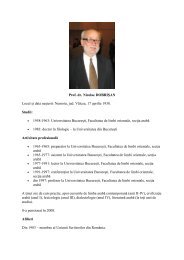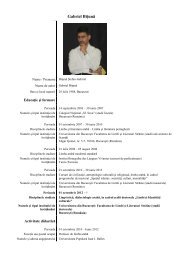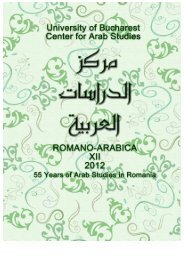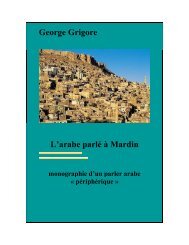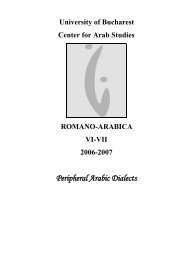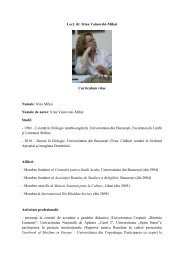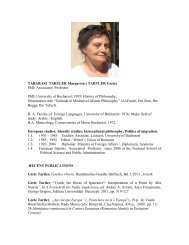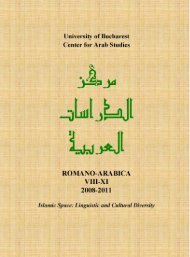Arabic Linguistics
Arabic Linguistics
Arabic Linguistics
You also want an ePaper? Increase the reach of your titles
YUMPU automatically turns print PDFs into web optimized ePapers that Google loves.
SOME CONSIDERATIONS OF WORD ORDER<br />
IN KĀNA CONSTRUCTIONS<br />
41<br />
Ramzi BAALBAKI<br />
American University of Beirut<br />
The word order of constructions with kāna or any of its sisters (hereafter:<br />
kāna constructions) is one of the most complex issues with which the later<br />
grammatical sources are concerned. These sources cite a host of examples of such<br />
constructions and uniformly point to the differences among grammarians as to<br />
their acceptability or otherwise. The purpose of this study is to unfold the general<br />
patterns into which these constructions may be grouped and to examine the<br />
analytical tools which the grammarians employed in determining their conformity<br />
to the criteria of their grammatical system. Based on that, it may be possible to<br />
demonstrate how the complexity of this issue was aggravated by the failure of the<br />
grammarians to propose a single principle which could act as a point of reference<br />
in accepting or refusing the constructions at hand, instead of resorting to diverse<br />
methods of analysis as the need arises in each case.<br />
We can divide the material related to word order in kāna constructions into<br />
six groups, each of which represents a specific issue with which the grammarians<br />
were concerned, and reveals the various patterns of word order which the<br />
permissible and impermissible constructions exhibit. For the sake of uniformity,<br />
our examples will be, wherever possible, standardized by using the same words<br />
(e.g., Zayd, qā‟im, t}a„āmaka, etc.) although different sources sometimes do vary<br />
in the choice of words in their examples. Reference will be made to a particular<br />
source only where there is a need to do so. 1<br />
I. Variation models:<br />
The most ―basic‖ construction, or model sentence, has to be kāna Zaydun<br />
qā‟iman since it has kāna, the umm 2 and not any of its ahàwāt, and since its word<br />
order begins with the operant followed by its subject and its predicate. Any other<br />
construction, as one can conclude from the grammarians, must be considered a<br />
variation on this one through a process of taqdīm and ta‟h`īr (preposing and<br />
postposing, or hysteron-proteron). The model variations, therefore, are:<br />
1. Zaydun kāna qā‟iman<br />
2. kāna qā‟iman Zaydun<br />
3. qā‟iman kāna Zaydun.



